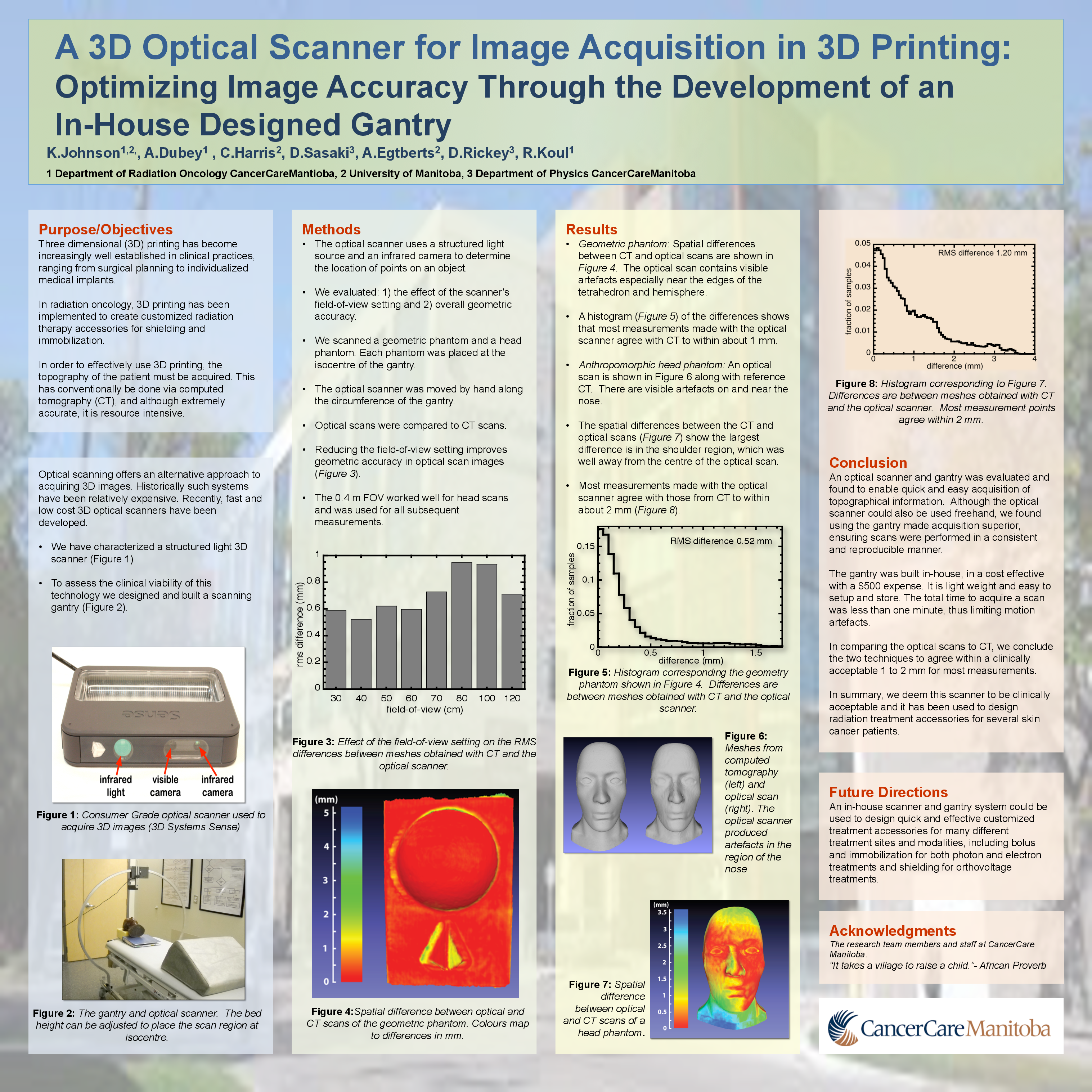Abstract
PURPOSE: The use of 3D printing for medical use is well established and has been utilized in clinical practices ranging from surgical planning to individualized medical implants. Three-dimensional printing has been implemented at our institution to create customized treatment accessories such as shielding and immobilization. In order to use 3D printing, the topography of the patient must first be acquired. We have previously achieved this using resource intensive methods such as a plaster mold or a CT scan. Recently, 3D scanners have been developed which are low cost (~$500), and can quickly acquire both the topographical and texture information of a patient. These scanners use methods such as structured light in order to construct accurate 3D models in minutes. We have characterized a structured light 3D scanner (3D Systems Sense), and have designed and built a scanning gantry in order to assess the clinical viability of this technology.
MATERIALS AND METHODS: The gantry consists of a circular hoop formed from square aluminum tubing, with a diameter of 126.5 cm. The optical scanner is mounted to an arm that can be moved isocentrically along the circumference of the hoop. The scanner-to-surface distance is adjustable to accommodate differently sized regions of the body. The gantry can tilt with respect to the patient table, allowing for acquisition of topography from virtually any direction. The gantry was built in-house with a total cost of about $500. An anthropomorphic head phantom was used to quantify the accuracy of the gantry-mounted 3D scanner. Meshes acquired using the 3D scanner were compared to a mesh generated from a high resolution CT scan, which was taken to be the gold standard. Optimal scan settings were identified and final assessment of the accuracy of the scanner was quantified using the Hausdorff distance between the two meshes.
RESULTS: The in-house gantry enabled quick and easy acquisition of patient topographical information with a low cost 3D scanner. Acquisition was much easier than using the scanner free-hand. The mean Hausdorff distance was typically found to be less than 0.5 mm, with maximum errors in the range of 1-2 mm. This was deemed to be clinically acceptable and the scanner has been used to design treatment accessories for several skin cancer patients.
CONCLUSIONS: Through a collaborative and innovative approach, an optical scanner gantry has been developed which can quickly, easily and accurately acquire topographical information. This information can then be used to design customized treatment accessories for many different treatment sites and modalities, including bolus and immobilization for both photon and electron treatments and shielding for orthovoltage treatments. The gantry is very lightweight and easy to store.






